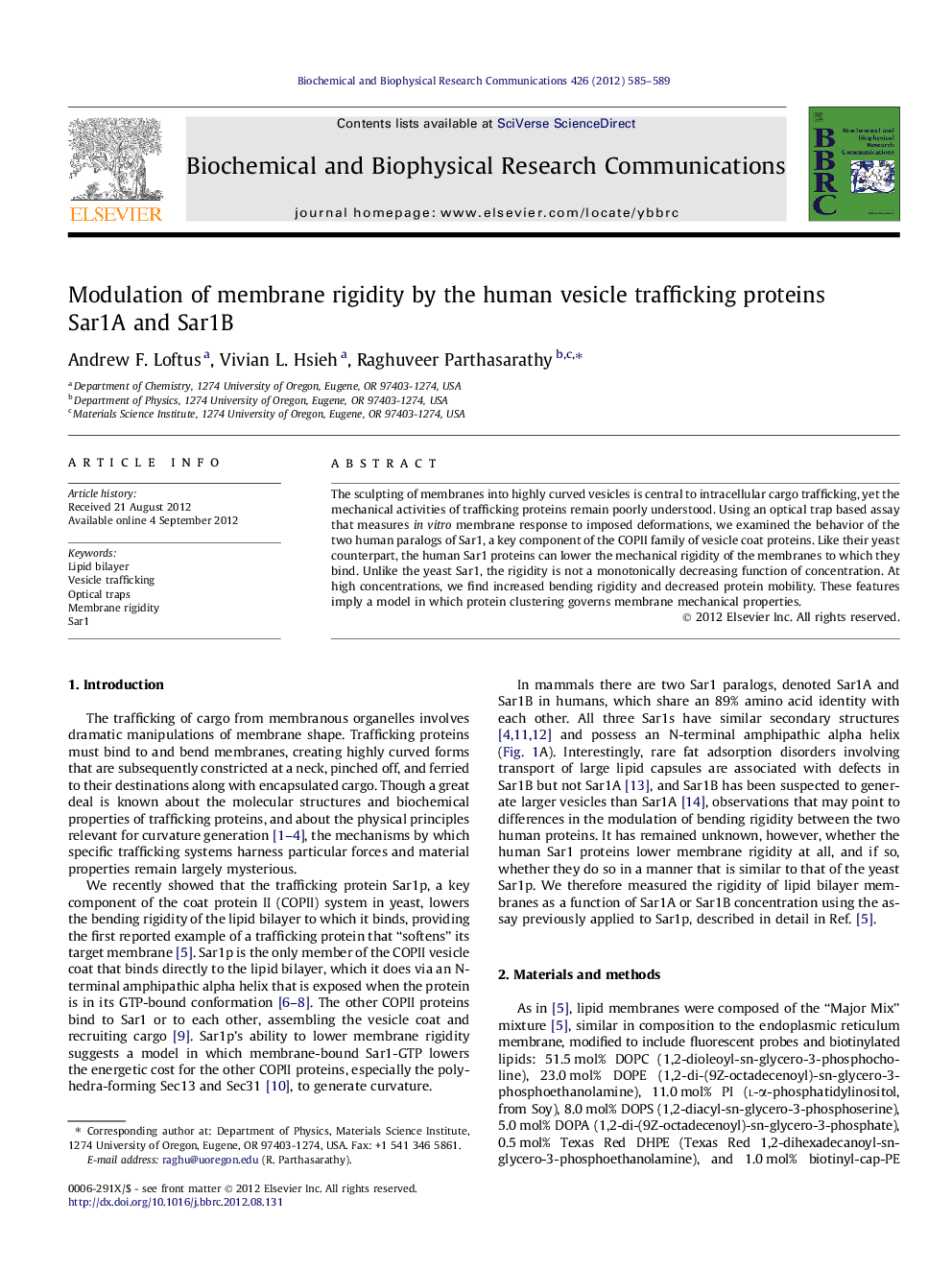| Article ID | Journal | Published Year | Pages | File Type |
|---|---|---|---|---|
| 1929283 | Biochemical and Biophysical Research Communications | 2012 | 5 Pages |
The sculpting of membranes into highly curved vesicles is central to intracellular cargo trafficking, yet the mechanical activities of trafficking proteins remain poorly understood. Using an optical trap based assay that measures in vitro membrane response to imposed deformations, we examined the behavior of the two human paralogs of Sar1, a key component of the COPII family of vesicle coat proteins. Like their yeast counterpart, the human Sar1 proteins can lower the mechanical rigidity of the membranes to which they bind. Unlike the yeast Sar1, the rigidity is not a monotonically decreasing function of concentration. At high concentrations, we find increased bending rigidity and decreased protein mobility. These features imply a model in which protein clustering governs membrane mechanical properties.
► Human and yeast Sar1 proteins lower membrane rigidity at low concentrations. ► At high concentrations, human Sar1 proteins increase membrane rigidity. ► A simple model of dimerization is consistent with rigidity and mobility data.
